I’m sure we all know the feeling. A highly desirable new lens is announced that would, surely, give an extra creative impetus to your photography. The only problem is the sky-high price. I’ve lost count of the number of times I’ve got to the end of a manufacturer’s press release enthusing about its latest optic, only to exclaim ‘how much?’ when the RRP is revealed at the end.
Of course, it’s not realistic to expect brand-new designs to cost the same as 5- or 10-year-old lenses, even when the base specifications are essentially the same. The latest lenses are sharper and can focus faster and more accurately, while featuring video-friendly features such as stepless apertures and completely silent operation. But this in turn means that some real bargains are to be had on the second-hand market, as early adopters pick up the latest and greatest replacement and sell on their existing kit.

In this article, I’ve trawled though the used market to pick out some of the best bargains currently available for under £200. You’ll notice that I’ve steered clear of some of the most obvious recommendations, for instance cheap full-frame 50mm f/1.8s. Let’s just take it as read that these generally represent the best-value lenses you can buy. Likewise, you can’t really go wrong with 85mm f/1.8s, or macro lenses in the 90-105mm range.
I’ve included plenty of lenses for APS-C DSLRs, as this still represents the largest group of cameras in regular use by enthusiast photographers. But I’ve also picked out some favourites for the longer-established mirrorless systems, too. It’s true that there aren’t many genuinely cheap lenses from the likes of Sony and Fujifilm, even second-hand, but there are still some bargains to be found if you look hard enough.
How much should you pay
Prices on the used market vary widely for any given lens; obviously you’ll pay a premium for one in ‘as new’ condition. Equally, you should pay less when buying privately through an online marketplace such as eBay, but this means giving up the reassurance you’d get from a specialist retailer that the item has been fully checked and correctly graded, and comes with a proper returns policy. If this is important to you, I’d suggest sticking with reputable firms such as Wex Photo Video, CameraWorld, Park Cameras, Grays of Westminster, Camera Jungle, London Camera Exchange and MPB. Third-party lenses may well also be priced differently depending on the lens mount. In this article, I’ve generally included indicative prices taken from www.mpb.com covering ‘good’ to ‘as new’ condition.
In general, the main rule with buying used is always to be absolutely sure of what you’re getting, before handing over your cash. If you’re thinking of buying online, be sure to read the description and examine photographs of the lens very carefully first. But with due care and attention, it’s a great way to expand your lens arsenal and creative options without breaking the bank.
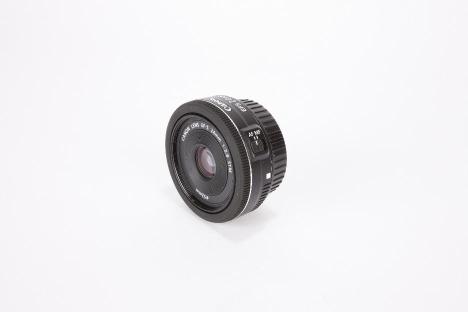
Canon EF-S 24mm f/2.8 STM
Guide price £100-120
This slimline, lightweight ‘pancake’ prime is a great choice for Canon APS-C users looking to assemble the most portable package possible. It offers a 40mm equivalent angle of view, which brings a very natural perspective to your photographs, and the f/2.8 aperture gathers useful extra light compared to the 18-55mm kit zooms generally supplied with DSLRs. Meanwhile the STM drive provides fast, accurate and silent autofocus. But the best thing about this lens is its petite size; at just 23mm in length and a mere 125g in weight, you really can carry it anywhere without noticing. This makes it ideal for unobtrusive street or social shooting, and the perfect complement to a standard zoom. For full-frame users the equivalent optic is the equally fine Canon EF 40mm f/2.8 STM (£90-110), while APS-C mirrorless EOS M-system users should grab the Canon EF-M 22mm f/2 STM (£130-145).

Canon EF-S 10-18mm f/4.5-5.6 IS STM
Guide price £140-£170
Wideangle zooms open up lots of creative opportunities, allowing you to shoot everything from sweeping vistas to expansive architectural shots. Traditionally such lenses were relatively expensive, but Canon changed that in 2014 when it launched this fine little optic at about half of the price of its higher-end sibling, the EF 10-22mm f/3-5.4.5 USM. Compact and lightweight for its class at just 240g, it also uses smaller 67mm filters than its competitors, which again helps save money. Its relatively slow maximum aperture is offset by the built-in optical image stabilisation for shooting in low light. It delivers images that are pleasingly sharp from the centre into the corners, especially when it’s stopped down to f/8 to f/11. Its most obvious flaw is strong vignetting wide open at 10mm, but this goes away at smaller apertures.
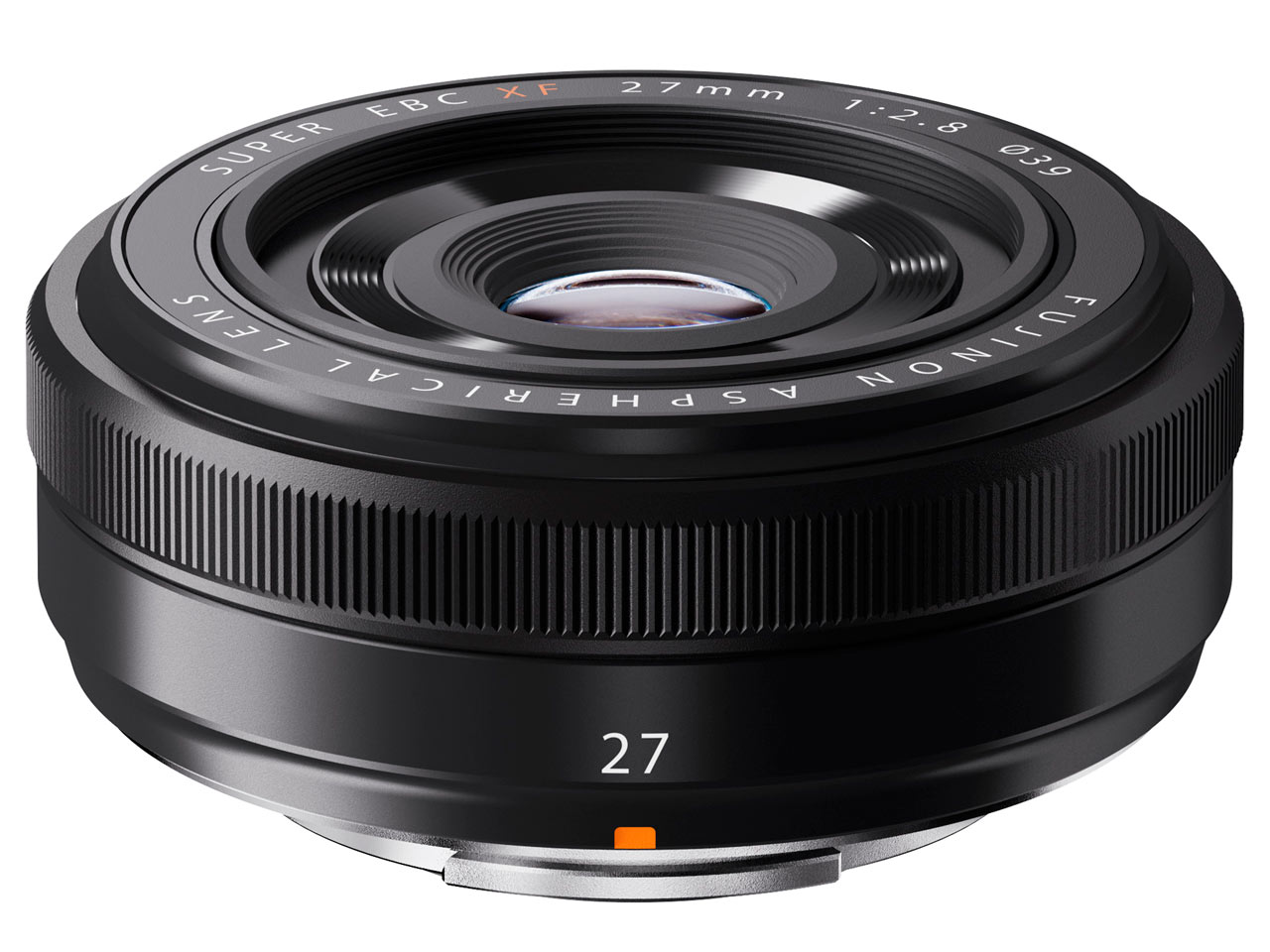
Fujifilm XF 27mm F2.8
Guide price £175-£200
There aren’t many truly inexpensive autofocus lenses for Fujifilm’s mirrorless APS-C X system, even second-hand. This reflects both the firm’s reluctance to make budget lenses in the first place, and the lack of third-party support. But the Fujinon XF 27mm F2.8 is an exception, and possibly the most under-appreciated optic in the entire range. It’s a mere 23mm thick and weighs only 78g, making it by far the smallest X-mount lens, while its 40.5mm equivalent view places it squarely in the general-purpose ‘perfect normal’ category. Its main drawback is the lack of an aperture ring, instead requiring the use of a dial on the camera body. But for photographers used to shooting with the budget XC zooms, this won’t be a problem. If you’d prefer a small prime with an aperture ring, then consider the Fujifilm XF 18mm F2 R; it combines a wider 27mm equivalent view with a one-stop faster aperture, and costs around £260.
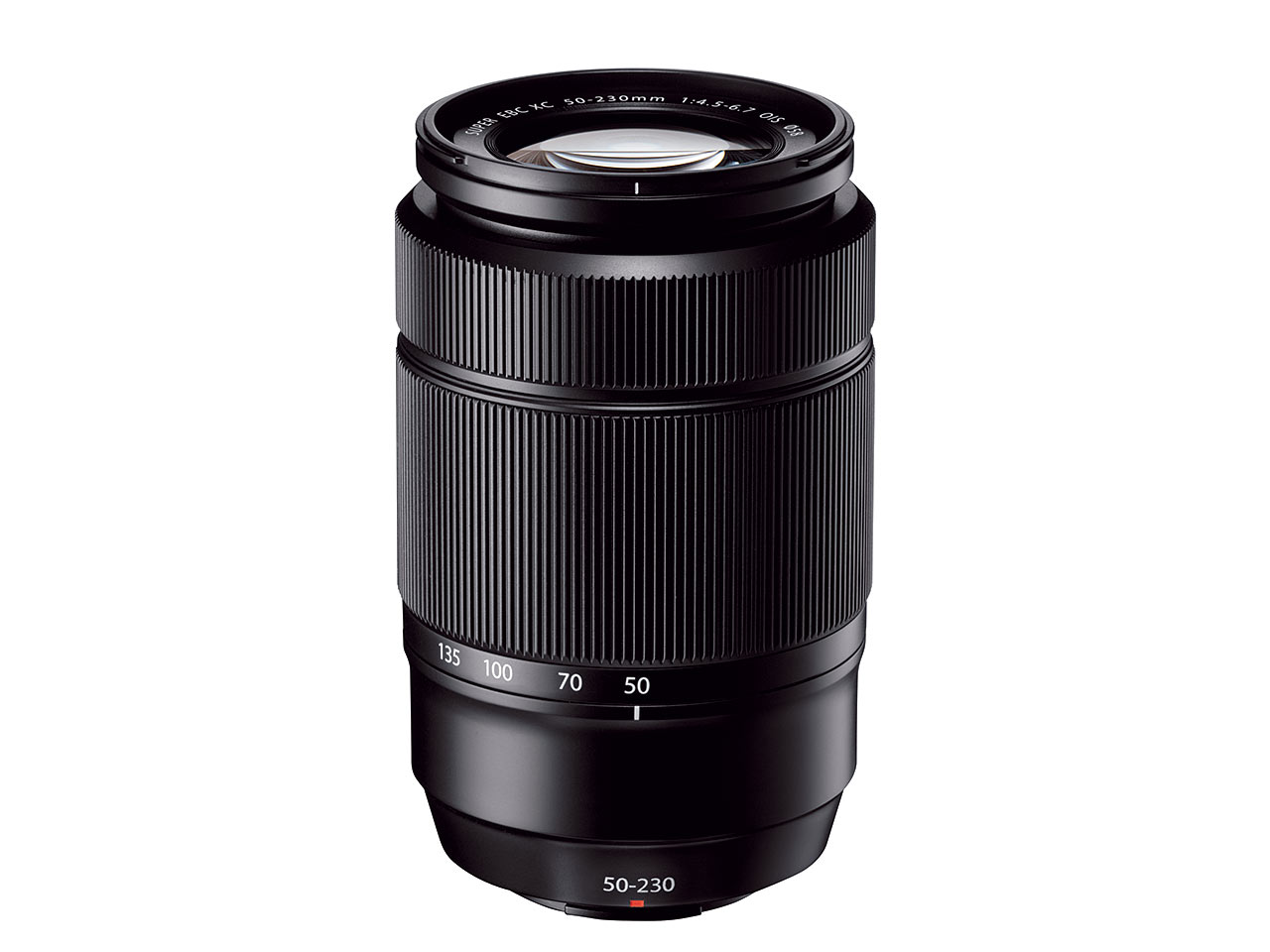
Fujifilm XC 50-230mm f/4.5-6.7 OIS
Guide price £160-200
The second lens most photographers buy for their camera is a telephoto zoom, and this is the most affordable option on offer for X system users. It provides a 75-345mm equivalent range in a relatively lightweight package that adds just 375g to your camera bag. Optical image stabilisation promises three stops worth of assistance in combating camera shake, while a stepping motor is on board for high-speed autofocus. Being an XC-series lens, though, it lacks the physical aperture ring that’s found in almost all of the firm’s M-mount lenses. The updated ‘II’ version that’s currently on-sale new promises smoother operation and slightly more effective image stabilisation, but commands a small premium on the second-hand market.
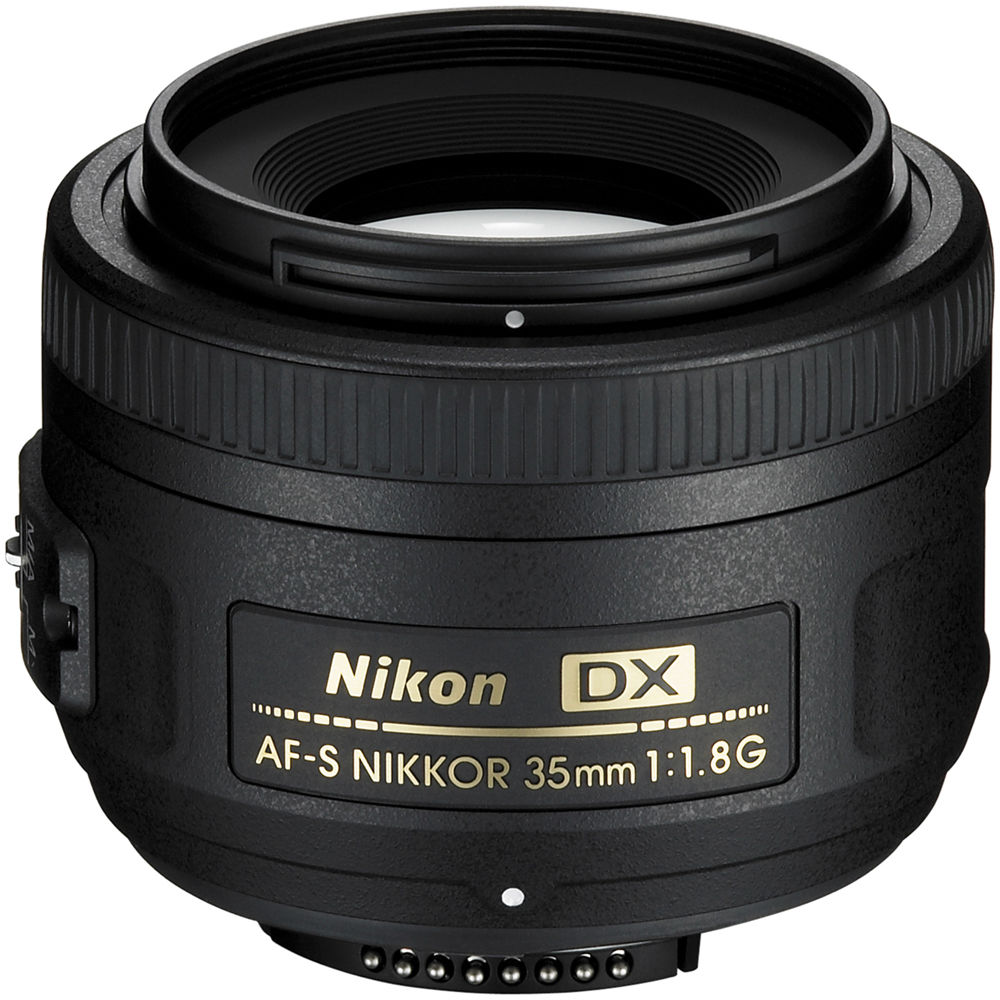
Nikon AF-S DX 35mm f/1.8 G
Guide price £90-110
This lightweight, large-aperture prime does essentially the same job on Nikon’s DX format DSLRs as the 50mm f/1.8 standard primes that once came as standard with 35mm film SLRs. It’s a great option for when you want to shoot in low light, or carry a lightweight, discreet kit. Optically it acquits itself very well, being considerably sharper than the kit zooms supplied with DSLRs, especially when stopped down to f/4 or beyond. Autofocus is rapid and quiet thanks to the use of an ultrasonic-type silent wave motor. Unsurprisingly for an inexpensive fast prime, colour fringing due to longitudinal chromatic aberration can be visible in out-of-focus regions of the image at large apertures. But it’s not hugely objectionable, and a small price to pay for getting a lens this sharp at such a keen price.

Nikon AF-S DX 16-85mm f/3.5-5.6 G ED-IF VR
Guide price £160-200
For Nikon users looking to upgrade from the 18-55mm kit zoom that came with their camera, the 16-85mm f/3.5-5.6 stands out for offering a 24mm equivalent field of view at the wideangle end. We’ve become very used to seeing this on compact cameras and lenses for mirrorless cameras, so it almost comes as a shock to rediscover how relatively uncommon it is for APS-C DSLR lenses. The versatile focal-length range extends to a portrait-friendly 128mm equivalent at telephoto, making this a real all-rounder. Optical image stabilisation promises up to four stops of shake reduction for low-light work, while the AF-S designation signals silent autofocus. If you can live without the wider angle of view and would prefer longer telephoto reach instead, take a look at the Nikon AF-S 18-140mm f/3.5-5.6G ED VR DX, which can bought for around the same price.

Olympus M.Zuiko Digital 40-150mm f/4-5.6 R
Guide price £80-£95
There’s a perception that building up a lens set for a mirrorless system will inevitably be expensive, but that’s genuinely not the case, especially when it comes to Micro Four Thirds. Both Olympus and Panasonic have made a point of catering to all users of all levels, which means that there’s a healthy supply of entry-level lenses on the used market. This telephoto zoom is a case in point – it offers an 80-300mm equivalent range in an ultra-lightweight 190g package. In terms of image quality it’s far better than you’d expect for the price, especially when stopped down a little. It’s a great companion for Olympus’s E-M10-series cameras in particular, but Panasonic users should steer clear due to the lack of image stabilisation, and instead buy something like the Lumix G Vario 45-150mm f/4-5.6 ASPH Mega OIS (£105-125).
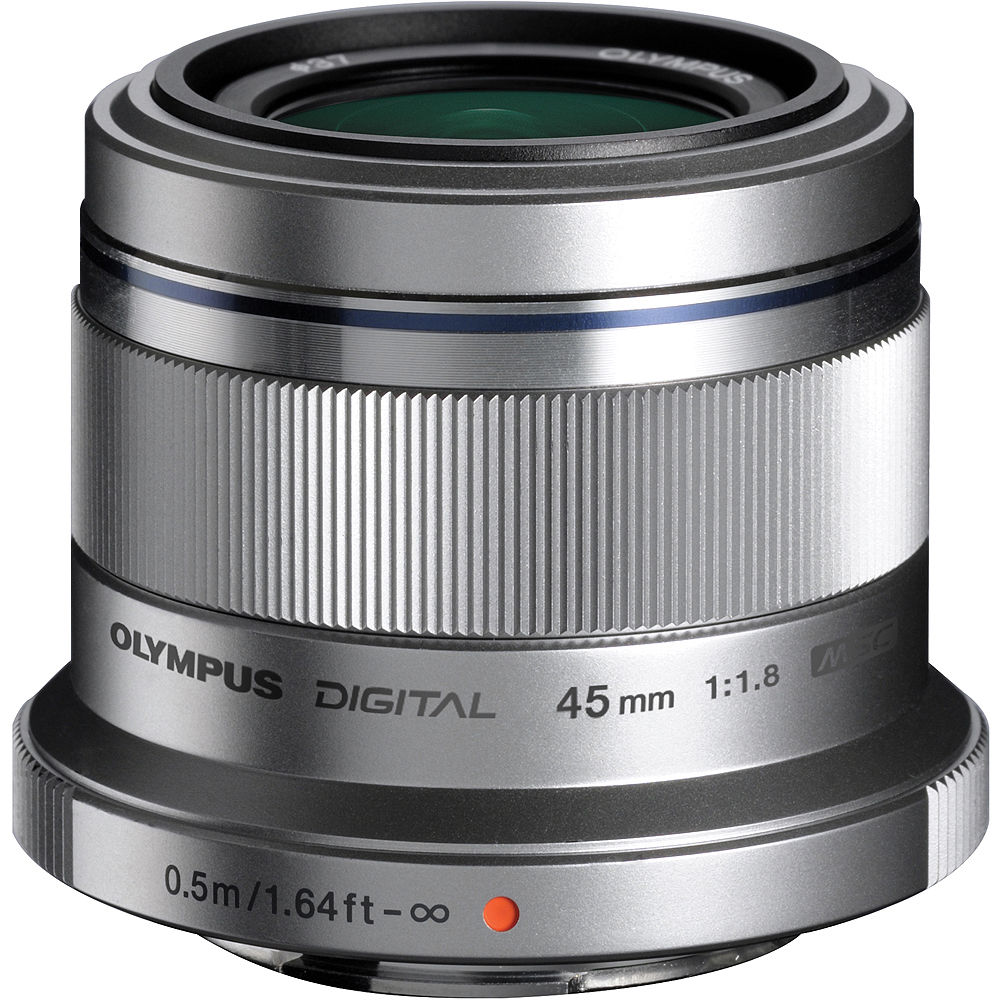
Olympus M.Zuiko Digital 45mm f/1.8
Guide price £130-£15
If it feels like we bang on about this one a lot, then that’s because we do. Indeed if there’s one lens that every new Micro Four Thirds owner should get into their kit bag as quickly as possible, this is it. Olympus’s minuscule portrait prime has been a perennial favourite since it was launched back in 2011, due to the way it combines a high, but not excessive level of sharpness with attractive background blur when shot wide open. The short telephoto 90mm equivalent angle of view also offers a very pleasing perspective for photographing people. Crucially, though, it comes at the kind of low price point we’re just not used to seeing from lenses for mirrorless systems. If you’d prefer a wider view, the Olympus M.Zuiko Digital 25mm f/1.8 is also well worth considering; expect to pay £190-230.

Taken using the tiny and inexpensive Olympus M.Zuiko Digital 45mm f/1.8

Panasonic Lumix G 12-60mm f/3.5-5.6 ASPH Power OIS
Guide price £160-£185
It’s difficult to think of a less remarkable-looking lens than the Lumix G 12-60mm f/3.5-5.6 OIS. It’s just a black plastic cylinder with zoom and focus rings. But appearances can be deceptive – this is one of the most versatile and best value small zooms around. Of course it’s not as good as the Leica-badged 12-60mm f/2.8-4, but you actually get an awful lot for your money. The 24-120mm equivalent zoom range is extremely versatile, covering everything from landscapes to portraits, while splash-proof construction offers reassurance when shooting outdoors in less-than-perfect weather. Most importantly, the image quality is more than respectable, while effective optical stabilisation helps keeps images sharp in low light. For Micro Four Thirds users, this is clear step up from 14-42mm kit zooms without breaking the bank

Panasonic Lumix G 25mm f/1.7 ASPH
Guide price £100-£120
In some ways, this inexpensive fast normal prime is Panasonic’s equivalent to the Olympus 45mm f/1.8 in the Micro Four Thirds ecosystem. It’s tiny and lightweight (just 52mm long and 125g), while also being decently sharp, especially when stopped down to f/2.8 or smaller. This makes it a fine complement to a standard zoom for those occasions when you want to achieve shallow depth of field or shoot in low light, or simply minimise the size of the camera you’re carrying. Buyers should note that it doesn’t include optical stabilisation, but then again, neither does any other Micro Four Thirds 25mm prime. It’s part of a trio of small budget primes from Panasonic that also includes the Lumix G Macro 30mm f/2.8 Asph Mega OIS (around £220) and the Lumix G 42.5mm f/1.7 ASPH Power OIS (£210-250). Both of these are slightly more expensive than their Olympus equivalents, but this reflects the added benefit of their built-in stabilisation.

Pentax DA 35mm f/2.4 AL
Guide price £70-90
Another example of a compact, lightweight standard prime, the Pentax DA 35mm f/2.4 AL is slated to deliver a ‘natural perspective similar to that of the naked eye’. Its 6-element, 5-group design may seem utterly conventional for this kind of prime, but unusually it includes a hybrid aspherical element in a bid to deliver enhanced contrast and detail right into the corners of the frame. In practice it’s impressively sharp, especially when stopped down to f/4 or smaller. However to keep the price down the lens doesn’t have its own autofocus motor, and instead exploits the screw-type drive from the camera body, which means it can be noticeably noisy. For those who lean more towards photographing people, the similarly designed and equally inexpensive DA 50mm F1.8 might be a better choice.

Samyang AF 35mm F2.8 FE
Guide price £180-205
There are very few inexpensive autofocus lenses available for full-frame mirrorless systems, with the longer-established third-party lens makers preferring to hold fire on making native designs until very recently. But Korean manufacturer Samyang has spotted this gap in the market, and is busily filling it in with a range of small but appealing primes. With the AF 35mm F2.8 FE, it’s delivered a lens that’s a perfect match to Sony’s compact Alpha 7-series bodies. Indeed this is exactly the kind of small, sharp lens that will remind many photographers of classic old manual focus primes. It’s a great option for situations when you want to stay unobtrusive, for example street photography comes to mind. The autofocus isn’t as fast and decisive as Sony’s own lenses, but image quality is very good indeed, especially when the lens is stopped down to f/8. At this price, frankly it’s an absolute steal.
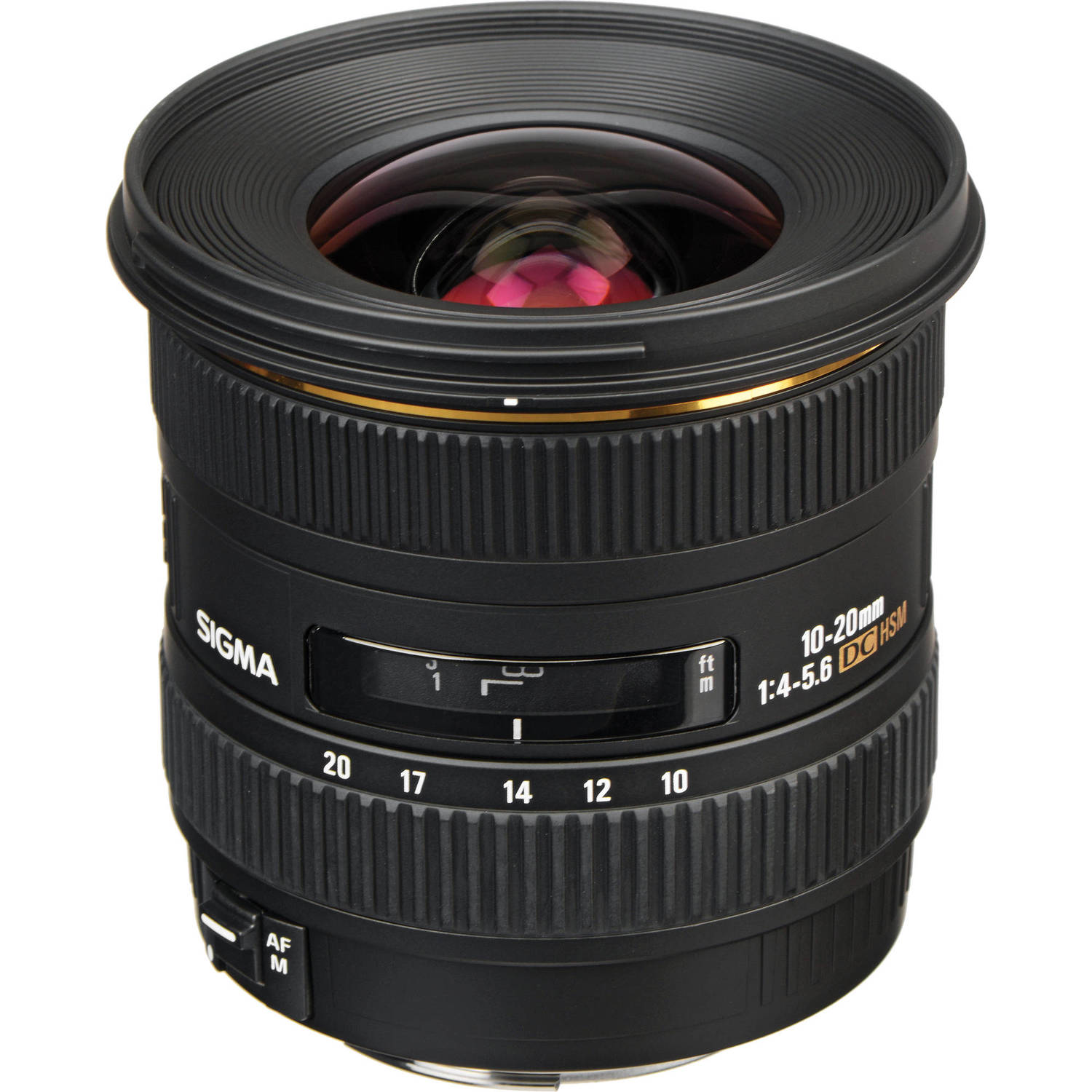
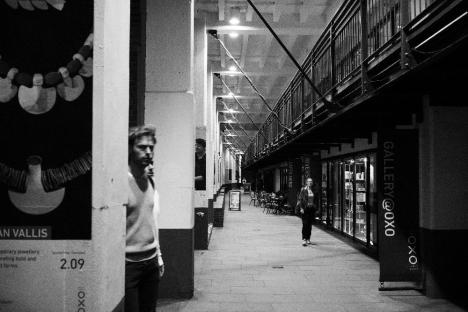 The Samyang 35mm f/2.8 is great for unobtrusive street photography
The Samyang 35mm f/2.8 is great for unobtrusive street photography
Sigma 10-20mm f/4-5.6 EX DC HSM
Guide price £130-190
One the earliest wideangle zooms made for APS-C DSLRs, this was an extremely popular lens before it was gradually replaced by the current f/3.5 version. As a result it’s relatively plentiful on the second-hand market, resulting in prices that are surprisingly low. It’s a very competent performer, thanks to the use of super-low dispersion glass and three aspherical elements to suppress chromatic aberration and distortion. In most mounts the built-in ultrasonic provides offers fast, near-silent focusing, but Sony and Pentax users have to make do with screw-drive AF from the camera body. Photographers who regularly shoot architectural subjects should be aware of the complex distortion at 10mm, with pronounced barrel distortion that’s localised to the corners of the frame and requires profiled corrections.

Sigma 30mm f/1.4 EX DC HSM
Guide price £155 – £185
It may have been replaced by an all-new model in Sigma’s ‘Art’ line in early 2013, but the original 30mm f/1.4 is still a very fine lens. It’s the only third-party fast ‘normal’ prime for APS-C DSLRs, with a 45mm equivalent angle of view. This provides a very natural look for everyday photography, while the fast aperture is ideal for low-light and shallow depth-of-field shooting. It includes a hypersonic motor for silent autofocus, with full-time manual override available at any time and a focus distance window at the top of the barrel. As usual for Sigma’s EX lenses, build quality is very good indeed, and the lens is available in mounts for all the main DSLR systems, including Sony and Pentax.

Sigma 105mm f/2.8 EX DG Macro
Guide price £190 – 230
Now supplanted from Sigma’s range by an optically stabilised version, the older 105mm f/2.8 is still one of the best macro lenses that you can buy, and one that we have used in the AP studio to test cameras for many years. Its minimum focusing distance of 31cm provides a true 1:1 macro magnification, with a good working distance for any budding macro photographer. The extending-barrel design results in rather slow autofocus, but for macro work, chances you’ll be focusing manually anyway. Optically it’s difficult to fault; our tests reveal very little difference in sharpness between the old and new Sigma 105mm f/2.8 macro lenses at the apertures most commonly used for close-up shooting.

Sony E 50mm F1.8 OSS
Guide price £130-£175
While there aren’t many bargains to be had with Sony full-frame mirrorless, richer pickings can be found on the used market if you shoot with the firm’s APS-C E-mount mirrorless cameras. The E 50mm F1.8 OSS stands out from other lenses with the same core spec (including Sony’s own FE 50mm F1.8) by being a modern internal-focus design specifically tailored for the smaller sensor format, that also incorporates optical image stabilisation. The upshot is that it’s simply a better choice all-round for APS-C users than its bulkier full-frame sibling, despite being fractionally more expensive. In terms of optics it’s nice and sharp, particularly when stopped down to f/2.8, with the only obvious flaw being colour fringing in out-of-focus areas due to longitudinal chromatic aberration, that may require treatment in raw processing. It’s available in both silver and black finishes.
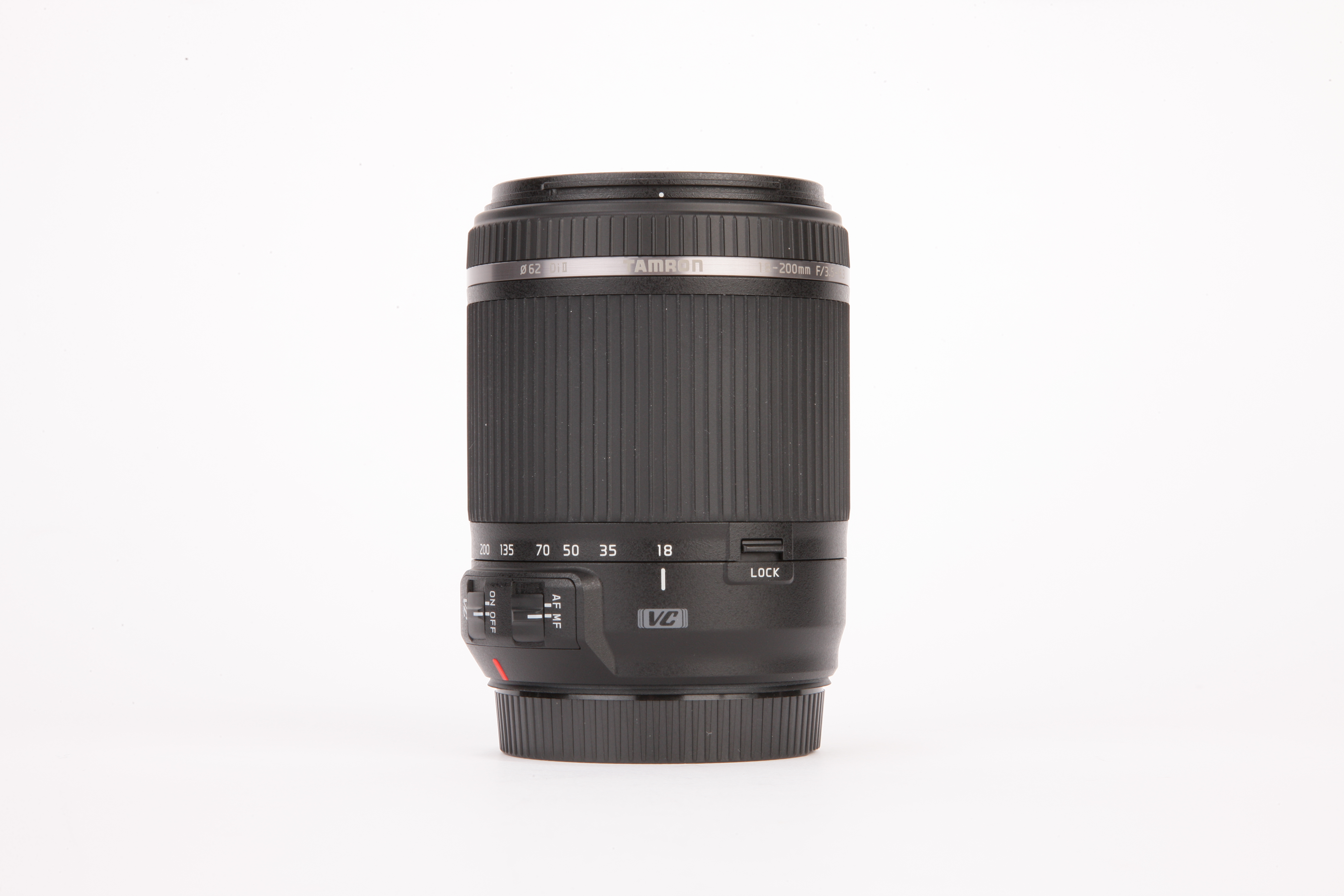 Tamron 18-200mm f/3.5-6.3 Vi II VC
Tamron 18-200mm f/3.5-6.3 Vi II VC
Guide price £110-£135
All-in-one superzooms are a great choice for traveling, if you’re prepared to sacrifice image quality for the convenience factor of not having to change lenses between wide and telephoto shots. One argument against them has traditionally been that you have to pay a lot of money for the privilege, but Tamron’s low-cost 18-200mm f/3.5-6.3 bucks this trend. Despite its bargain price, it doesn’t make many concessions compared to its more expensive peers either. You’ll get the most out of it if you’re prepared to shoot in raw and post-process away its most evident flaws, which include fairly pronounced distortion and lateral chromatic aberration. This should give you images that look just fine for many purposes, unless you like to print large or scrutinise them for pixel-level detail. So as long as you understand this lens’s strengths and weaknesses, it can be a genuinely useful tool.
 Captured using the Tamron 18-200mm at is wideangle end
Captured using the Tamron 18-200mm at is wideangle end
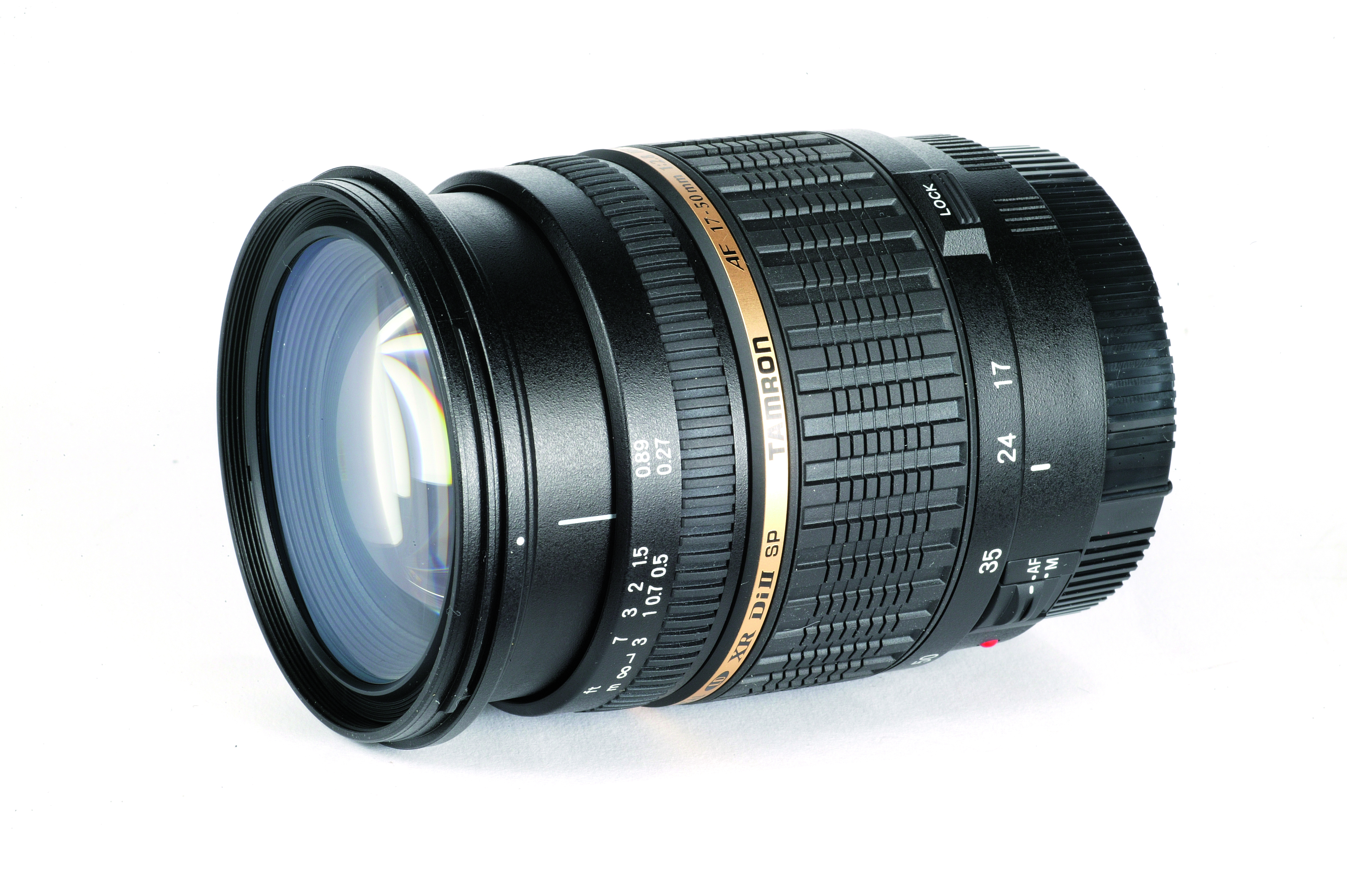 Tamron SP AF 17-50mm f/2.8 XR Di II LD Aspherical (IF)
Tamron SP AF 17-50mm f/2.8 XR Di II LD Aspherical (IF)
Guide price £120-£165
Tamron’s classic fast normal zoom has now been replaced by an image-stabilised version (at least in Canon and Nikon mounts), but it’s still a great choice for APS-C SLR shooters looking for high-quality optics. It provides a 26-75mm equivalent zoom range, coupled with a fast maximum aperture that makes it especially useful for shooting indoors or in low light situations. The 17-50mm f/2.8 was always a popular lens among enthusiast DSLR users, and this means it’s in plentiful supply on the second-hand market, which in turn helps to keep prices low. Nikon users should note that in its original incarnation, the lens didn’t have a built-in autofocus motor, which was added only in the 2008 update (model A16NII). This means that the older version can only be focused manually on most recent Nikon DSLRs.
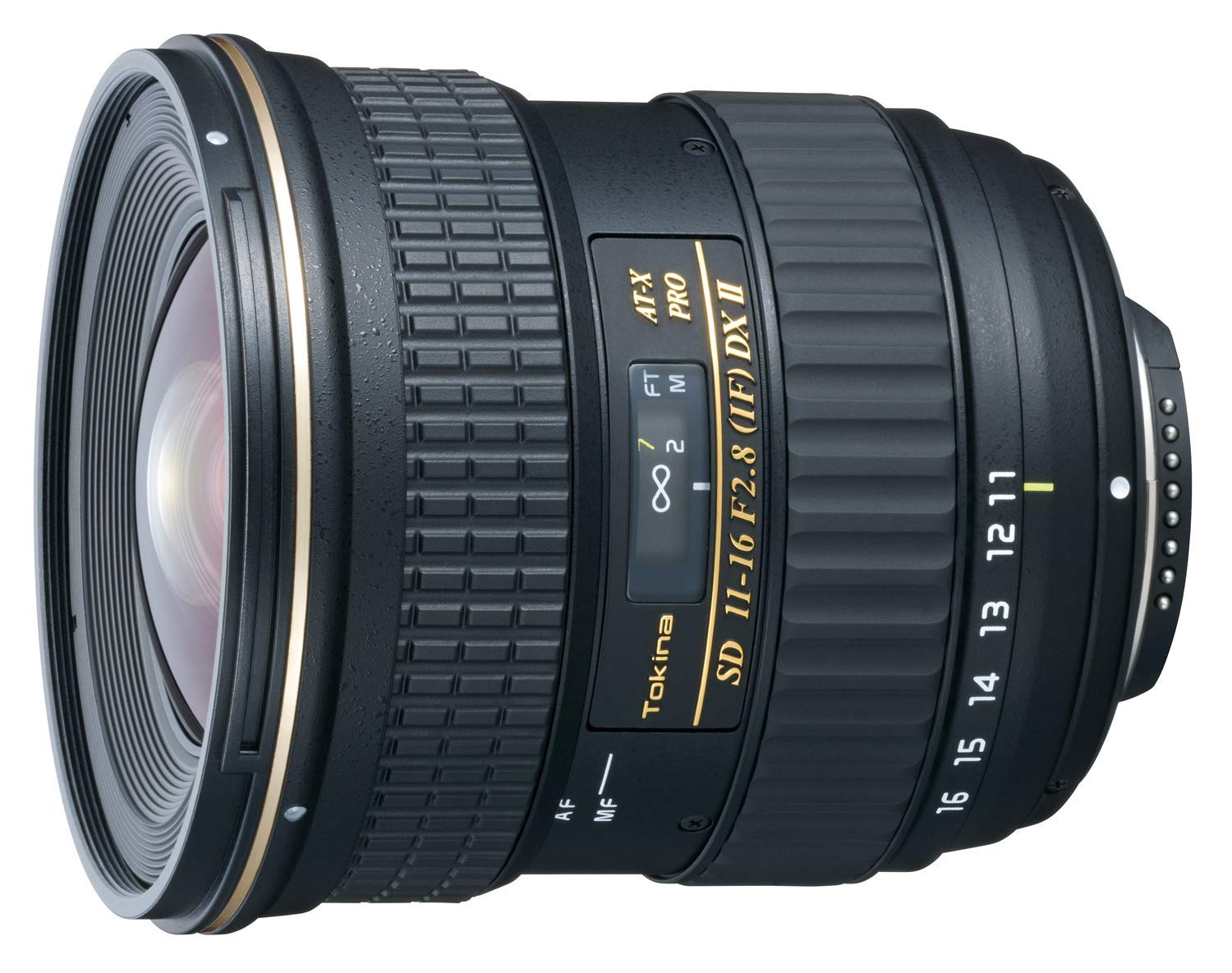 Tokina 11-16mm f/2.8 Pro DX II
Tokina 11-16mm f/2.8 Pro DX II
Guide price £190-£270
The most expensive lens in this roundup is also the most exotic, but it can still be found second-hand for less than £200 if you’re lucky. Tokina is the only company to date to have made a wideangle zoom with a constant f/2.8 aperture specifically for APS-C DSLRs, with its 11-16mm optic being available in Canon, Nikon and Sony Alpha mounts. Like most fast zooms, this lens has a reputation for excellent optics, as well as robust built quality. The design includes a handy focus clutch mechanism, whereby pulling the focus ring towards the camera engages manual focus. Most Nikon users will need to make a point of hunting down the later ‘II’ version, which includes a built-in autofocus motor along with updated coatings that promise slightly improved optical performance. However both versions will focus equally well on Canon DSLRs, while all Sony-fit models are type II.







